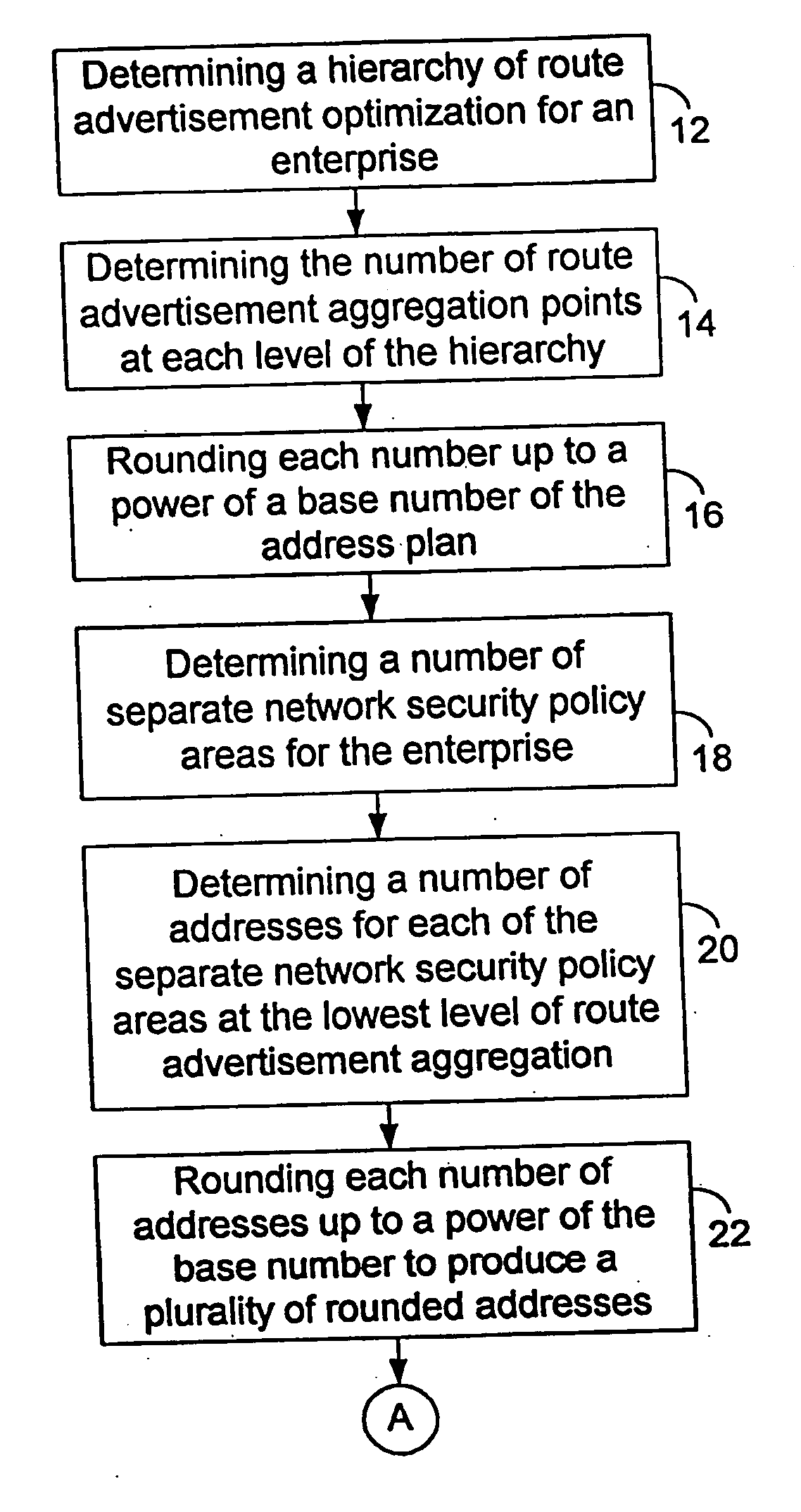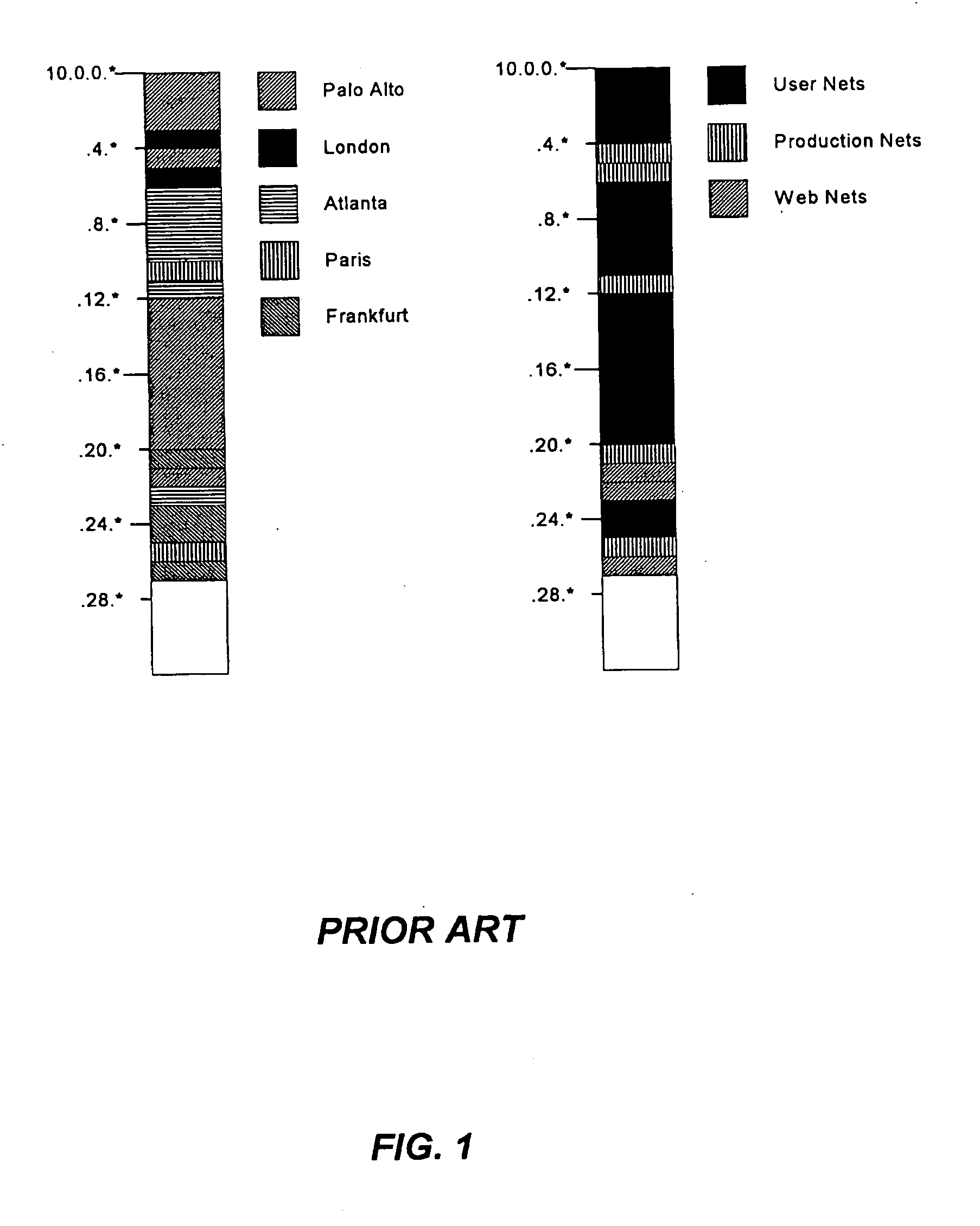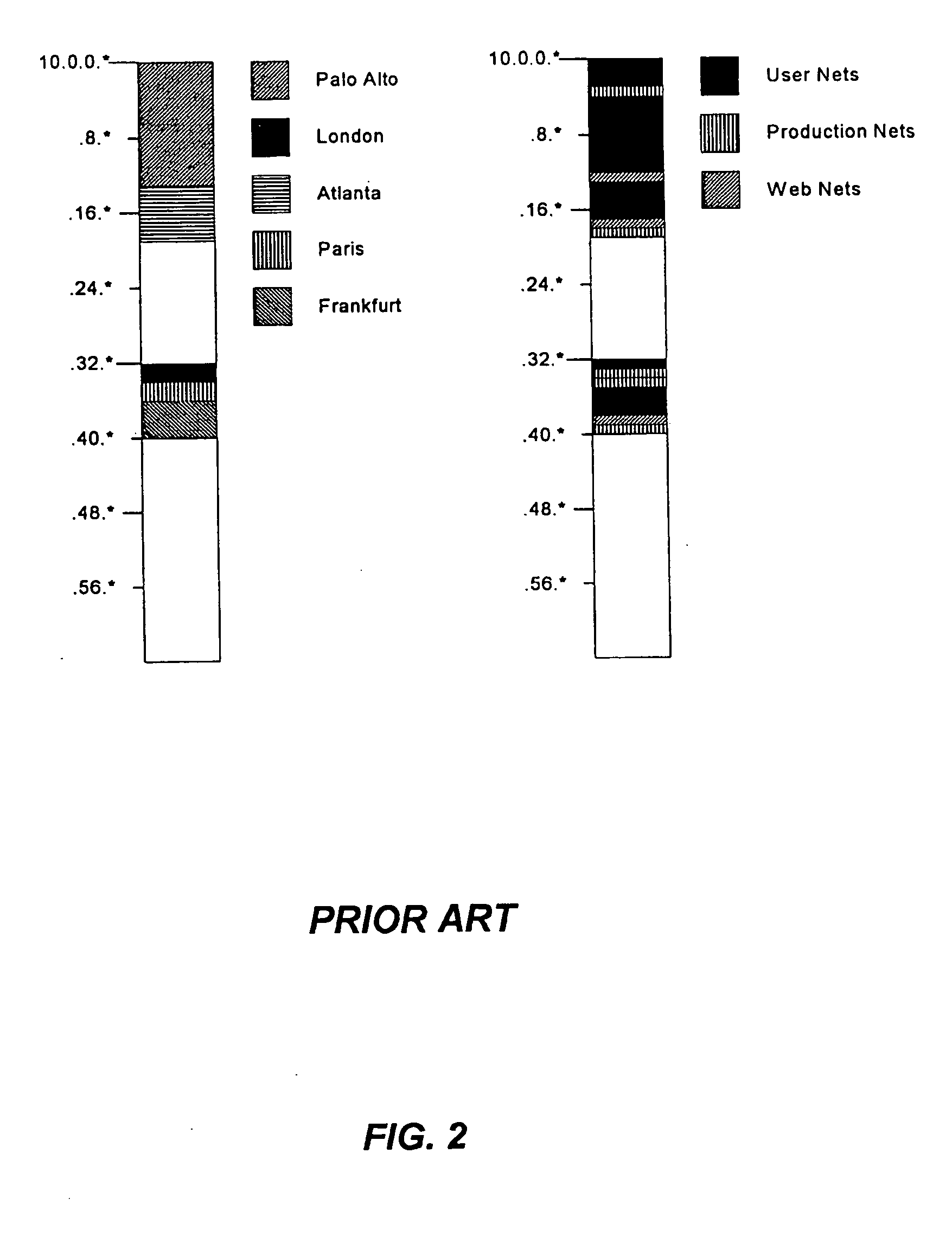System and method of aggregating discontiguous address ranges into addresses and masks using a plurality of repeating address blocks
a repeating address block and address range technology, applied in the field of system and method of aggregating discontiguous address ranges into addresses and masks, can solve the problems of increasing difficulty and complexity of managing routing infrastructure and policy implementation infrastructure, becoming difficult and costly to effectively manage, and increasing difficulty and cost of managing these two infrastructures
- Summary
- Abstract
- Description
- Claims
- Application Information
AI Technical Summary
Benefits of technology
Problems solved by technology
Method used
Image
Examples
Embodiment Construction
[0048] In this description, the present invention is described in detail with regard to the drawing figures briefly described above. Similar labels and numbers on one drawing figure may represent the same element on other drawing figures. The following terms are used throughout this description. For purposes of construction, such terms have the following meanings:
[0049] The term “architect” unless otherwise specified, is intended to refer to a person or people responsible for designing an enterprise's network address plan.
[0050] The term “discontiguous,” unless otherwise specified, is intended to refer to a plurality of binary ones and zeros that are not contiguous. In non-binary address mask schemes, “discontiguous” in intended to refer to a plurality of masked and unmasked digits that are not contiguous.
[0051] The term “policy area” unless otherwise specified, is intended to refer to a plurality of network address ranges all having the same network policy.
[0052] The term “poli...
PUM
 Login to View More
Login to View More Abstract
Description
Claims
Application Information
 Login to View More
Login to View More - R&D
- Intellectual Property
- Life Sciences
- Materials
- Tech Scout
- Unparalleled Data Quality
- Higher Quality Content
- 60% Fewer Hallucinations
Browse by: Latest US Patents, China's latest patents, Technical Efficacy Thesaurus, Application Domain, Technology Topic, Popular Technical Reports.
© 2025 PatSnap. All rights reserved.Legal|Privacy policy|Modern Slavery Act Transparency Statement|Sitemap|About US| Contact US: help@patsnap.com



